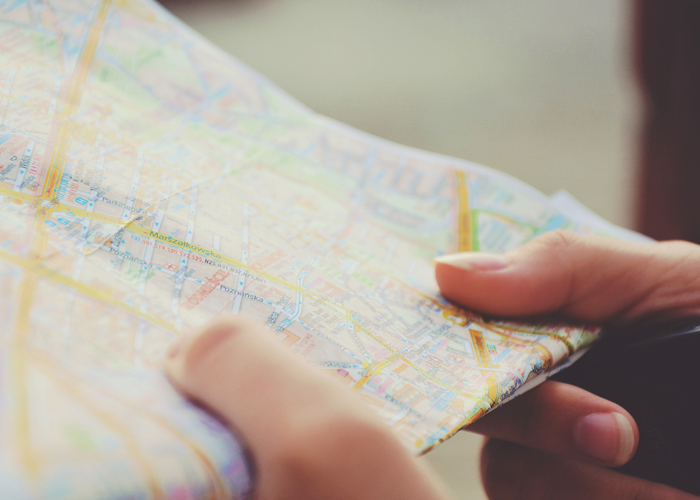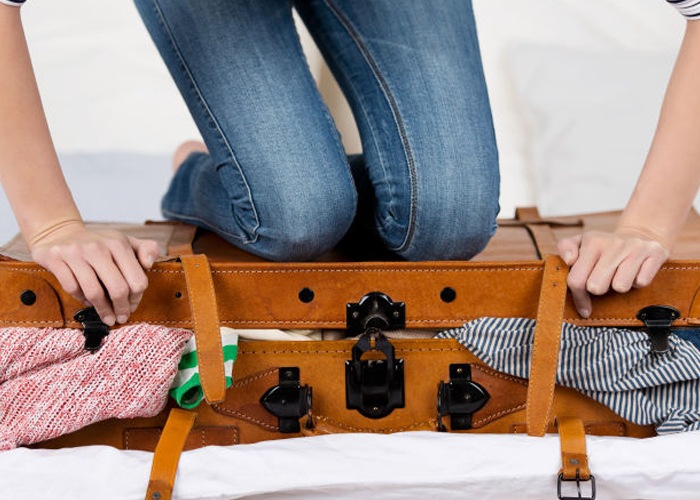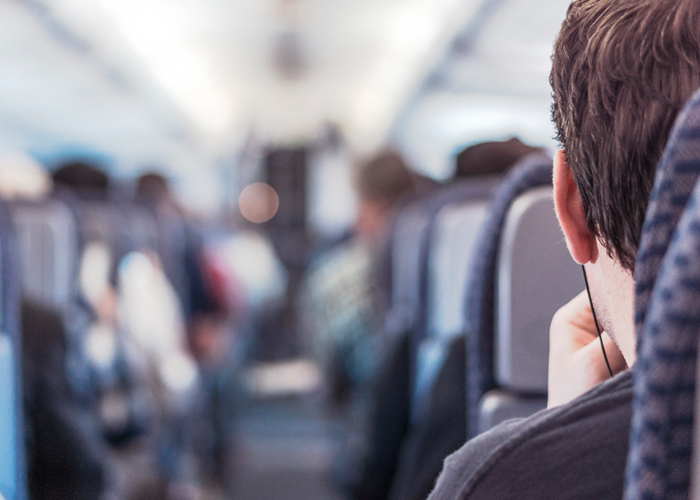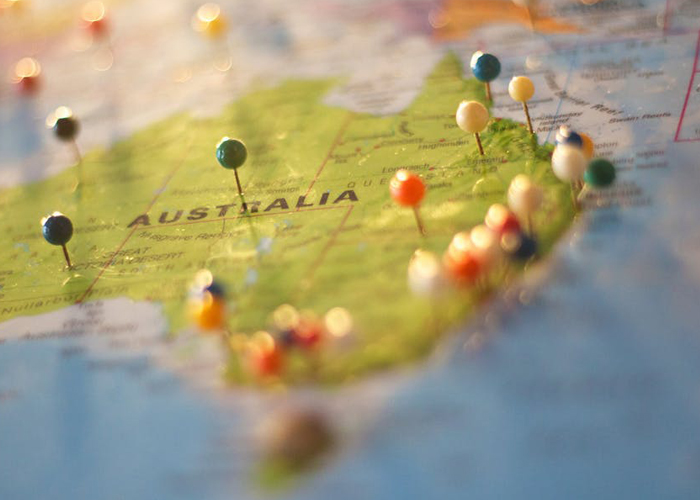All Inclusive Packages – Mexico – Vacation


All Inclusive Packages – Mexico – Vacation

Flights | Airfare | Round Trip | Air Only

Cruise Specials | Cruise Packages | Cruise Deals

With each new warning about the dangers of the Zika Virus, it may be tempting to postpone your trip to Central and South America or the Caribbean, but keep your vacation days blocked on your calendar as all three of these destinations are home to some countries not currently affected by the outbreak, making them a safe choice for a vacation without Zika worries for travelers. Check out our list of getaways across Europe, the Americas and the Pacific which are all Zika free as of today but remember to keep an eye on the Government of Canada website https://travel.gc.ca/travelling/health-safety/travel-health-notices/152 for updates.
Azores
Named one of the top places to go in 2017, this Atlantic island chain located two-thirds of the way to Portugal appeals to adventure travelers, beach bums, and Europhiles alike. The nine volcanic islands use the euro and speak Portuguese, but more importantly, offer hikes through hedges of blue hydrangeas, wine-tasting tours, and breath-taking whale-watching lookouts. These islands have so much to offer, you can’t go wrong.
Cyprus
European tourists have flocked to Cyprus’s beaches for years, and Canadians are finally catching on. With average daily temperatures in the mid to high 20’s celsius , Cyprus is beach-friendly as late as October, but pack a sweater, as nights can get chilly. If you tire of the Mediterranean sun and sand, (is that even possible?) you can head further inland into the pine and almond filled country sides.
Madagascar
If you seek an indulgent African beach vacation, opt for Madagascar. The island offers opulent resorts like the Miavana Island Sanctuary opened this year, and strong tourism infrastructure in place, the world’s fourth-largest island is one of those spots you’ll want to visit before your friends find out about it. Madagascar is home to the bug-eyed lemurs, geckos, giant moths, and other exotic fauna making it a hot spot for environmental travelers as well.
Bermuda
With pink sand beaches and pastel-colored homes, Bermuda is a pristine island with a strong British feel. The beautifully preserved town of St. George, Britain’s oldest town in the New World, is a World Heritage Site that also happens to have world-class shopping. Are you a golfer looking to practice your swing? The island is known for its golf, boasting some of the most challenging and scenic courses in the world. If on the other hand you are an action junkie, you will want to snorkel around the shipwrecks off Elbow Beach and hit the 22+ miles of bike trails.
Uruguay
Head to Uruguay’s interior and stay in an “estancia”, a working ranch, to experience gaucho life in the pampas. You’ll get an insider’s look at how these famous cowboys work with cattle and herd sheep in what are essentially the dude ranches of South America. Then head to the coast where the city’s capital, Montevideo, boasts a beautiful 19th-century opera house, Teatro Solís, on the outskirts of old town Ciudad Vieja. This area is also rich with beautiful old churches, Art Deco buildings, and museums.
Chile
Chile really does have something for everyone. Sightsee in urban Santiago, drive into the nearby Andes for world class skiing, head into the Atacama Desert to stargaze with astronomers, or pass through Chile’s vineyards to get to the coastal towns of Viña del Mar and Valparaíso Oh, and did we forget to mention trekking in Patagonia or visiting Easter Island? This South American country offers everything you may want and more.
Seychelles
It’s hard to go wrong on this Indian Ocean archipelago, straight north of Madagascar. Wander over the dramatic rock formations along Anse Source d’Argent on La Digue Island, explore the thick tropical forests of Praslin islands, snorkel with sea turtles, or simply relax at private island resorts like the new Six Senses Zil Pasyon. If you were thinking about heading to the Maldives, where Zika is a problem, the Seychelles are a comparable but Zika-free option.
Maui, Hawaii
It’s the best island in the U.S., according to our Readers’ Choice Award 2016 results, and has held that spot for the last 23 years. The choice of activities are endless, from lounging on the beach with no plans to snorkeling, hiking, and swimming in waterfalls all day, it means there’s something for everyone on the second-largest Hawaiian island. Beach bums can check out the #1 resort in the state, the Andaz Maui at Wailea Resort, while the outdoorsy, adventurous types should head out on the Road to Hana, a 68-mile scenic route that hits most of Maui’s most striking natural features, like the Seven Sacred Pools.
Australia
Are you looking for a more urban beach adventure? Head to Sydney, Australia, where you’ll want to check out the rock pools in addition to the classic sandy beaches like Bondi. Australia hasn’t seen the spread of Zika like its Southeast Asian neighbors, so you’ll be able to enjoy the serious food scene out on the patio without worrying about mosquitoes ruining your vacation.
Mallorca
In the summer, Mallorca is packed with European tourists. But, in the winter, you’ll find the classic Mediterranean blue waters, mountain views, and quaint cobblestone streets without the crowds. The lowest temperatures of the year hit in January and fluctuate in the 15 to 18C range, so it still won’t be too frigid for beach walks and boat rides.
New Zealand
New Zealand’s South Island is seeing a big boom in tourism thanks to some breathtaking Instagram shares of the mountains, but the beaches and wine regions have caught our eye also. You may want to skip this if you’re looking for a relaxing getaway, but adventurous travelers should head to Queensland for an adrenaline infusion before taking a break to sink their toes in the warm sands.
 We are starting to think about summer vacations and packing can make even the most seasoned traveler tremble a little. Packing one suitcase doesn’t have to take hours.
We are starting to think about summer vacations and packing can make even the most seasoned traveler tremble a little. Packing one suitcase doesn’t have to take hours.
Pack efficiently, and lightning fast, by following these steps.
Whether flying halfway across the globe or driving an hour for a quick weekend getaway, packing is an unavoidable chore. And unless you’re blessed with monk-like minimalism and supreme foresight, it always ends up taking too much time. With this in mind, we share the best tricks and tips for cutting down packing time, for any bag, to a matter of minutes. Here, our trusty guide to streamlining the tedious process.
Step 1 : Always, always use a packing list
Compose your own or use one of many handy apps, which considers trip activities and local weather to generate lists. This time-saving step will prevent you from emptying out your whole closet or forgetting something crucial and once you customize, you’ll use it for endless trips to come. Added bonus: nothing is more cathartic than crossing items off a list.
Estimated time: We’re not going to count this one, because you could easily do this while commuting to and from work, or while half-watching reality TV. Read on.
Step 2: Keep toiletries and essentials pre-packed if at all possible
Liter-sized transparent bags are ideal for zipping through security. When it’s time to pack, you can just reach under your sink and grab them. Replenish after each trip so you’re set before your next one and not running out to get TSA-approved liquids at the drugstore or forced to toss that larger-than-allowed shampoo bottle you had hoped to sneak on.
Estimated time: Less than a minute
Step 3: Bring clothes that mix and match easily
A solid travel uniform, whether it involves a neutral color palette or avoids loud prints, will make for effortless styling and double (or triple) the outfit options using fewer pieces. For a long weekend, you can always get at least five great outfits from four tops, three bottoms, two pairs of shoes and if you’re a woman, one dress. For a longer trip, one to two weeks, add a few tops and maybe another dress or pair of shoes if there’s a fancier occasion involved. Jeans and pants can generally be worn multiple times without needing a wash. Remember to wear the bulkiest items, like boots and outerwear, while traveling to take up less luggage space.
Estimated time: 10 minutes
Step 4: Lay everything out before even opening your suitcase
This way, you can see it all at once and pare down if needed. You can also strategize where each type of item will go in your bag: Start with the heaviest items toward the wheels or bottom of bag, and cushion anything fragile in the center, this goes for hard and soft suitcases as well as duffel bags.
Estimated time: This can be done while choosing items in the previous step, taking up no additional time
Step 5: Select a luggage that you can comfortably handle and pack it in
To flat pack or roll? It seems this debate will never die, just remember that a strategic combination of both will allow you to pack everything in snugly, anything left loose results in wrinkles. Durable clothes like jeans, tees, and sweaters can be rolled to fit between crevices and around harder items, while delicate dresses, blouses or suits can be flat packed in plastic dry cleaning bags to minimize wrinkles. For those who want to leave room to bring back souvenirs, compression bags can be a game-changer: Although not as glamorous as shoe bags, use grocery bags to wrap up footwear so it doesn’t get the rest of your clothes dirty. And don’t forget to make use of any “dead space” by storing sunglasses and other small objects inside shoes.
Estimated time: 5 minutes
Take it from experienced travelers, once you have the first few steps of prep done, the whole process will go much faster for future trips. You may even find yourself packing your bag in less time than it took to read this article.
 Everyone remembers the thrill and excitement of their first time travel
Everyone remembers the thrill and excitement of their first time travel
experiences, whether it’s traveling somewhere for the first time ever, visiting a
new destination, trying a new experience or staying in a new type of accommodation.
To get the most out of visiting a new destination, we have come up with a list of top tips for first time travelers following global research from the most creditable source, our clients who have been there, done that and have the passport stamp to prove it.
Be bold.
Don’t just book the holiday you think you should be going on. You are never too old or too young to visit a new city, go backpacking or venture out alone. It is never as challenging as you think it will be, disregard all the obstacles and do what you want to do!
Get the authentic experience.
Make sure you indulge in the local culture and try not to keep to the well-beaten tourist tracks. A great way to soak up the local atmosphere is to head to a restaurant away from the main drag, hot spots and ask the waiter to recommend their most popular dishes. Almost a third of first time travelers revealed that trying the local food was one of their favourite tips to give friends and family.
Be prepared well in advance.
Check if you require a Visa well ahead of departing from home. Some Visas require more effort and money than others, so make sure to check the relevant government website. Same applies for passports. Check your passport’s expiration date before you travel as certain countries require at least 6 months validity to enter.
Better to be safe than sorry.
Take pictures of your passports, Visas and travel insurance and email them to yourself, just in case you lose them.
Be vigilant with your money.
Always stash some money or a spare credit card in case you lose your wallet. Hide it away in a money belt or in a secret compartment in your travel bag. Many of our travelers agree that a secret stash of cash is one of the most important tips for those planning their first trip.
Get acquainted with the language.
If you don’t speak the local language, a helpful trick is to download Google Translate to your mobile phone. It will take away the pain of wild gestures, furrowed brows and raised voices. You might also want to consider learning a few key phrases before you head out, especially words to help navigate travel, bookings and ordering from menus.
Pack less.
Always pack less than you think you will need. Many travelers regret packing too much when they leave the country. At least two days before you go, lay everything out on the bed that you think you will need, then put away a third and pack a travel bottle of washing detergent instead. Pack layers and put comfort first, especially when it comes to shoes!
Be mindful what you pack.
Check the luggage allowance before you fly and if necessary, pack heavier items (like chargers and cameras) in your hand luggage. If you’re heading somewhere hot, it’s worth packing a light sarong. It can be used for anything from a pillow on a long bus journey, something to cover your shoulders with when visiting a religious site, to blankets in the evening and a towel at the beach.
Sharing is caring.
When traveling with friends or family, share some of your clothes out amongst your bags. That way if a bag is lost, you’ll still have some items to wear.
Research, research, research.
Research local scams to watch out for – whether it be particular tour companies to avoid or how to get a reputable taxi from the airport. Many first time travelers feel researching local safety advice is an important part of any holiday prep. Also, make sure to research the phone number of the Canadian consulate in the country you’re staying in, and keep it with you throughout your stay. And if worst comes to worse the international emergency number is 112, even if the phone is locked or it’s not showing any service provider.
Meet other tourists.
If you’re traveling on your own, the best way to meet new people while traveling is by staying at social able accommodations such as hostels, B&B’s and family run hotels. There is a misconception that these accommodations are dangerous, dark places where masked killers attack innocent tourists. It might feel daunting at first, but traveling for the first time is all about exhilaration and pushing your boundaries.
No expectations.
Trust your gut, be open minded and don’t expect to experience anything in particular. If you’re heading somewhere for the first time, you’ll never really know what’s in store but go with the flow and enjoy. Remember to just relax and enjoy every single minute of this adventure.
Take a chill pill
Be flexible and don’t overdo the scheduling. Flexibility is key when traveling as you never know what kind of experiences will come your way, if the weather will take a sudden turn or who you may meet in your travels.
Take a mental picture instead
Get your eyes of your cellular device or camera and look up! Enjoy the landscape, the architecture, the sky and perhaps most importantly, read the signs in the airport. If you’re always looking through a camera lens or at your phone you’ll miss some of the most important moments of your trips. The moments that will make you feel fuzzy and excited even when you return home.
Avoid the extra charges
Remember to let your bank and mobile provider know that you’re heading abroad too to avoid any card cancellations or surprise bills. Checking in with your bank and mobile provider is one of the most important tips to remember ahead of a trip abroad.
We hope these tips are helpful and if you have any others that we missed please share them with us so that we can in turn share with our followers.
 Australia, just saying the name conjures up images and emotions. Located in the Southern Hemisphere, where the toilets swirl backwards and the seasons are the opposite of home, and where you are secretly dreaming of visiting. Even if it is winter there we have some very compelling reasons (excuses?) to finally visit the Land Down Under, even during their “cold” season…
Australia, just saying the name conjures up images and emotions. Located in the Southern Hemisphere, where the toilets swirl backwards and the seasons are the opposite of home, and where you are secretly dreaming of visiting. Even if it is winter there we have some very compelling reasons (excuses?) to finally visit the Land Down Under, even during their “cold” season…
The weather is still wonderful and by “cold”, we mean not really cold. Australia, for the most part, is a pretty warm place, even during the winter Sydney normally hits a low of about 10 degrees Celsius and it’s even warmer in northern areas, where it mostly just gets less humid and rains much less. You’ll still be able to join surfers and swimmers at Manly Beach, catching waves until the winter sun falls into the sea.
Australia’s winter weather is better for some things, especially longer road trips. You may have heard that Australia’s Outback is a scenic yet steaming desert, which is why it’s best to see this beautiful part of the country during the winter months. Rent a camper van and take a major league road trip from tropical Darwin to Ayer’s Rock, it is said that it’s the closest you can get to driving on the moon while still on Earth. Another option would be to take a smaller but still spectacular 150-mile trek along the idyllic coast of the Great Ocean Road. You may need an extra blanket for sleeping in your van, but it’s better than roasting inside it during the 100-degree December heat.
Australia also hosts wonderful winter festivals, the greatest of which is VIVID Sydney, the largest party of lights, music and ideas in the Southern Hemisphere. Taking place in late May or early June each year, VIVID features free nightly light shows and incredible art installations, sparkling LED-decked boats cruising the harbor, live music, creative conferences, and the sails of the legendary Sydney Opera House illuminated with mesmerizing 3D projections.
If VIVID is not for you there are also other amazing and occasionally odd festivals. Vivid is followed by film and winter festivals in June and July. Aboriginal culture is celebrated with the August Amhem Land’s Garma Festival. Darwin hosts the ridiculous Beer Can Regatta, and yes, the boats are made our of beer cans, in early July. Then Katoomba becomes the most un-Grinch town as it celebrates Christmas in July, during Yulefest.
For summer sports, winter down under, is still warm enough to do all the water activities Australia is famous for surfing, swimming and snorkeling the Great Barrier Reef. If sandy beaches and warm clear waters are not your thing, Australia offers other options too, with the snow skiing available on its peaks at top resorts like Mt. Buller and Perisher. Two sports so rough and fun they can be played at any time of year, Rugby and Australian Rules Football (a.k.a. “Footy”) are at the summits of their seasons during the winter months. If you don’t know the rules it doesn’t matter; there will be large men in short shorts punching oblong balls and each other as loud, excited fans scream at them. Simply find the famous Melbourne Cricket Ground, or a neighbourhood pub, for a match, and pick a team to cheer for.
Unlike Northern Hemisphere birds, the whales of the Southern Hemisphere migrate north for the winter, passing very near many parts of Australia during their quest to breed. The best whale watching kicks off in May in New South Wales and Tasmania, and in June in Queensland and Victoria. Book a boat tour to see them breach and splash up close.
If you need another important reason to head to Australia in their winter, your wallet will thank you for it too. Fewer tourists during the “off” season means better deals in June-August, and less crowded beaches, roads, and whale watching adventures. But don’t worry, the Footy matches and pubs will still be crammed with fun folks at any time of the year.
